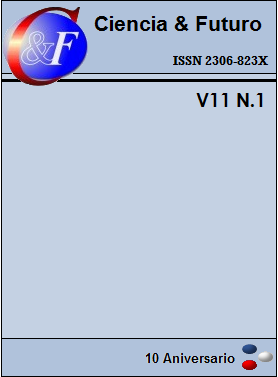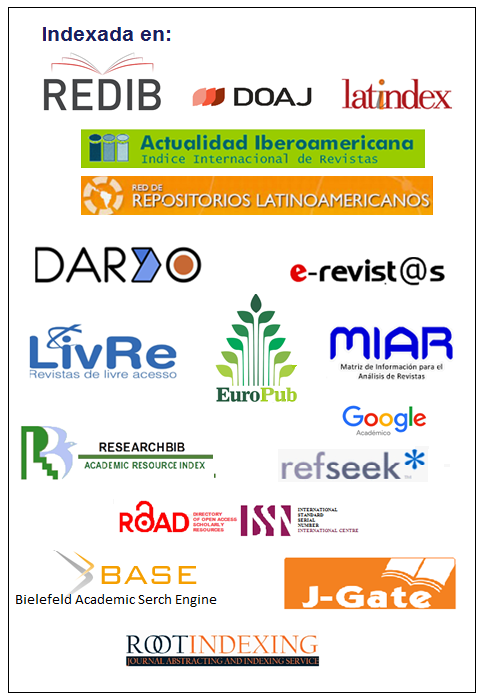Gender and internet addiction in mexican university students
Keywords:
internet addiction, symptoms of internet addiction, Young's scale, YIAS, students, university students, men and women, gender.Abstract
The objective of this study was to describe and compare the level and symptoms of internet addiction in young people of both sexes in Mexico. A total of 350 university students from private and public schools were evaluated with the Young Internet Addiction Scale (1998). It turned out that 82,8% of the university students evaluated presented AI at different levels. Significant differences were observed between sex, men with high percentages of addiction in severe and moderate and women in mild. Symptoms indicated significant differences between internet levels, where the highest scores for salience, excessive use, loss of control, anticipation, occupational and social neglect were presented in severe and moderate AI. No differences between men and women in the level of addiction regarding the symptoms of AI. The percentage of addiction level is high; It is important to mention that like substance addictions, internet addiction presents the same decrease in psychological, social, behavioral and brain characteristics, which alters functions in daily life. It is necessary to pay attention to this current health problem in order to implement prevention and intervention programs in university students and in the general population.Downloads
References
AMERICAN PSYCHIATRIC ASSOCIATION. 2013. Diagnostic and statistical manual of mental health disorders. 5ht edition.
BALCONI, M. & FINOCCHIARO, R. 2016. Deficit in rewarding mechanism ans prefrontales left/right cortical effect in vulnerability for internet adiction. Acta Neuropsychiatrica 28(5): 272-285.
BUIZA-AGUADO, C.; GARCÍA-CALERO, A.; ALONSO-CÁNOVAS, A.; ORTIZ-SOTO, P.; GUERRERO-DÍAZ, M.; GONZÁLEZ-MOLINIER, M. Y HERNÁNDEZ-MEDRANO, I. 2017. Los videojuegos: una afición con implicaciones neuropsiquiatrías. Psicología educativa 23(2): 129-136. Consultado: 14/08/2019. Disponible en: https://journals.copmadrid.org/psed/art/j.pse.2017.05.001
CAO, F.; SU, L.; LIU, T. & GAO, X. 2007. The relationship between impulsivity and internet addiction in a sample of Chinese adolescents. European Psychiatry 22: 466–471.
CHOI, J. S.; PARK, S. M.; LEE, J.; HWANG, J. Y.; JUNG, H. Y.; CHOI, S. W. ET AL. 2013. Resting-state beta and gamma activity in internet addiction. International Journal of Psychophysiology 89: 328–333.
CÍA, A. H. 2013. Las adicciones no relacionadas a substancias (DSM-5, APA, 2013): un primer paso hacia la inclusión de las adicciones conductuales en las clasificaciones categoriales vigentes. Revista Neuropsiquiátrica 76(4): 210-217.
CRUZ, S. 2006. El cerebro y el consumo de drogas. Abril-Junio, CINVESTAV, 36-45.
DUFOUR, M.; BRUNELLE, N.; TREMBLAY, J.; LECLERC, D.; COUSINEAU, M. M.; KHAZAAL, Y.; LÉGARÉ, A. A.; ROUSSEAU, M. & BERBICHE, D. 2016. Gender Difference in Internet Use and Internet Problems among Quebec High School Students. Canadian Journal of Psychiatry 61(10): 663–668. doi: 10.1177/0706743716640755.
ECHEBURÚA, E. 2013. Adictos a las nuevas tecnologías. Mente y Cerebro 61: 26-31.
FERRÉ, F.; SEVILLA, J Y BASURTE, I. 2016. Adicciones comportamentales y patología dual. En; Protocolos de intervención de patología dual. Ed. Edikamed, Barcelona.
GRANT, J. E. & CHAMBERLAIN, S. R. 2014. Impulsive action and impulsive choice across substance and behavioral addictons: cause or consequence. Addictive Behaviors 39: 1632-1639.
GRIFFITHS, M. D. 2005. En. Rosenberg, K. P. & Feder, L. C. 2014. An Introduction to behavioral addictions. Behavioral Addictions. Elsevier.
HA, Y. M. & HWANG, W. J. 2014. Gender Differences in Internet Addiction Associated with Psychological Health Indicators Among Adolescents Using a National Web-based Survey. International Journal Mental Health Addiction 12: 660–669. doi.org/10.1007/s11469-014-9500-7.
HONG, S. B.; KIM, J. W.; CHOI, E. J.; KIM, H. H.; SUH, J. E.; KIM, C. D.; KLAUSER, P.; WHITTLE, S.; YUCEL, M.; PANTELIS, C. & YI, S. H. 2013. Reduced orbitofrontal thickness in male adolescents with internet addiction. Behavioral and Brain Function 9: 11. doi: 10.1186/1744-9081-9-11.
INSTITUTO NACIONAL DE ESTADÍSTICA Y GEOGRAFÍA (INEGI). 2017. Encuesta Nacional sobre Disponibilidad y Uso de Tecnologías de la Información en los Hogares, ENDUTIH. Consultado: 24/03/2019. Disponible en: https://www.inegi.org.mx/contenidos/saladeprensa/aproposito/2019/nino2019_Nal.pdf
NSTITUTO NACIONAL DE ESTADÍSTICA Y GEOGRAFÍA (INEGI). 2019. Encuesta Nacional sobre Disponibilidad y Uso de Tecnologías de la Información en los Hogares, ENDUTIH. Consultado: 24/03/2019. Disponible en: https://www.inegi.org.mx/programas/dutih/2019/
IRVINE, M. A.; WORBE, Y.; BOLTON, S.; HARRISON, N. A.; BULLMORE, E. T. & VOON, V. 2013. Impaired decisional impulsivity in pathological videogamers. PloS One 8(10): e75914. http://dx.doi.org/10.1371/journal.pone.0075914.
KALIVAS, P. W. & VOLKOV, N. 2005. Fundamentos neurales de la adicción: una afección de la motivación y de la capacidad de elección. American Journal Psychiatry 8(10): 577-587.
KANNAN, B.; KARTHIK, S.; KRUSHNA, G. & MENON, V. 2019. Gender Variation in the Prevalence of Internet Addiction and Impact of Internet Addiction on Reaction Time and Heart Rate Variability in Medical College Students. Journal of Clinical and Diagnostic Research 13(4): CC01-CC04.
KAUR, S. 2019. Gender differences and relationships between internet addiction and perceived social self-efficacy among adolescents. Indian Journal of health and well being 9(1): 106-109.
KHAN, M. A.; SHABBIR, F. & RAJPUT, T. A. 2017. Effect of Gender and Physical Activity on Internet Addiction in Medical Students. Pakistan Journal of Medical Sciences 33(1): 191–194. doi: 10.12669/pjms.331.11222.
KIEFER, F.; FAUTH-BÜHLER, M.; HEINZ, A. & MANN, K. 2013. Neurobiology of behavioral addictions. Nervenarz 84(5): 557-62. doi: 10.1007/s00115-012-3719-y.
KO, C.; YEN, J.; YEN, C.; CHEN, C. & WANG, S. 2008. The Association between Internet Addiction and Belief of Frustration Intolerance: The Gender Difference. CYBERPSYCHOLOGY & BEHAVIOR 11(3): 273-279. doi: 10.1089/cpb.2007.0095.
KOOB, G. F.; SANNA, P. P. & BLOOM, F. E. 1998. Neuroscience of addcition. Neuron 21: 467-476.
LAWAL, A. M. & IDEMUDIA, E. S. 2018. Gender difference, class level and the role of internet addiction and loneliness on sexual compulsivity among secondary school students. International Journal of adolescence and youth 23(4): 422-430. doi.org/10.1080/02673843.2017.1406380
LEEMAN, R. F. & POTENZA, M. N. 2013. A targeted review of the neurobiology and genetics of behavioral addictions: an emerging área of research. Can Journal of Psychiatry 58(5): 260-273.
LIANG, L.; ZHOU, D.; YUAN, C.; SHAO, A. & BIAN, Y. 2016. Gender differences in the relationship between internet addiction and depression: A cross-lagged study in Chinese adolescents. Computers in Human Behavior 63: 463-470.
MARAZZITI, D.; PRESTA, S.; BARONI, S.; SILVESTRI, S. & DELL’OSSO, L. 2014. Behavioral addictions: a novel challenge for psychopharmacology. CNS Spectrums 19: 486-495 .10.1017/S1092852913001041
NOCK, N. L.; MINNES, S. & ALBERTS, J. L. 2017. Neurobiology of substance use in adolescents and potential therapeutic effects of excercise for preventiosn and treatment of substance use disorders. Bitrth Defects Research 109(20): 1711-1729.
PETRY, N. M.; ZAJAC, K. & GINLEY, M. K. 2018. Behavioral addictions as mental disoders: to be or not to be? Annual Review Clinical Psychology 14: 399-423.
PROBST, C. C. & VAN EIMEREN, T. 2013. The functional anatomy of impulse control disorders. Current Neurology and Neurosciences Reports13: 386-396. doi: 10.1007/s11910-013-0386-8.
ROSENBERG, L. C. & FEDER K. P. 2014. Behavioral Addictions: Criteria, Evidence, and Treatment. Elsevier.
SOLOMON, R. L. & CORBIT, J. D. 1974. An opponent-process theory of motivation: I. Temporal dynamics of affect. Psychological Review 81: 119–145.
WEINSTEIN, A.; FEDER, L. C.; ROSENBERG, K. P. & DANNON, P. 2014. Internet Addiction disorder: overview ans controversies. En. Rosenberg, K. P. & Feder, L. C. 2014. An Introduction to behavioral addictions. Behavioral Addictions. Elsevier.
YEN, C.; KO, C.; YEN, J.; CHANG, Y. & CHENG, Y. 2009. Multi‐dimensional discriminative factors for Internet addiction among adolescents regarding gender and age. Psychiatry and Clinical Neurosciences 63: 357–364. doi:10.1111/j.1440-1819.2009.01969.x.
YOUNG, K. 1996. Internet addiction: The emergence of a new clinical disorder. Cyberpsychology & Behavior 1: 237-244.
YOUNG, K. 1998. Caught in the net. John Wiley & Sons, Nueva York.
YOUNG, K. 2007. Cognitive therapy with internet addicts: tratments outcomes and implicatiosns. CyberPsychology & Behavior 10(5): 671-679.
YOUNG, K. S. & ROGERS, R. C. 1998. The relationship between depression and Internet addiction. Cyberpsychology and Behavior 1: 25-28. http://dx.doi.org/10.1089%2Fcpb.1998.1.25.
YOUNG, K. S. 2011. Internet Addiction: A Handbook and Guide to Evaluation and Treatment. John Wiley & Sons.
ZHOU, Y.; LIN, F. C.; DU, Y. S.; QIN, L.; ZHAO, Z.; XU, J. & LEI, H. 2011. Gray matter in internet addcition: a voxel bases morphometry study. European Journal of Radiology 79: 92-95.
Published
How to Cite
Issue
Section
Esta obra está bajo una Licencia Creative Commons Reconocimiento-NoComercial 4.0 Internacional
La Revista Ciencia & Futuro es una revista de acceso abierto, todo el contenido está disponible gratuitamente sin cargo para el usuario o su institución. Los usuarios pueden leer, descargar, copiar, distribuir, imprimir, buscar o vincular los textos completos de los artículos, o utilizarlos para cualquier otro fin lícito, sin pedir permiso previo al editor o al autor. Todo lo anterior, de acuerdo con la definición de BOAI de acceso abierto.
Los autores que publican en esta revista están de acuerdo con los siguientes términos: Licencia Creative Commons Atribución-NoComercial permite que el beneficiario de la licencia tenga el derecho de copiar, distribuir, exhibir y representar la obra y hacer obras derivadas para fines no comerciales siempre y cuando reconozca y cite la obra de la forma especificada por el autor o el licenciante. Los autores pueden establecer por separado acuerdos adicionales para la distribución no exclusiva de la versión de la obra publicada en la revista (por ejemplo, situarlo en un repositorio institucional o publicarlo en un libro), con un reconocimiento de su publicación inicial en esta revista. Se permite y se anima a los autores a difundir sus trabajos electrónicamente (por ejemplo, en repositorios institucionales o en su propio sitio web) antes y durante el proceso de envío, ya que puede dar lugar a intercambios productivos, así como a una citación más temprana y mayor de los trabajos publicados (Véase The Effect of Open Access) (en inglés). Lo anterior debe realizarse siempre sobre el artículo ya publicado por Ciencia & Futuro.
Los autores mantienen el control sobre la integridad de sus trabajos y el derecho a ser adecuadamente reconocidos y citados.
A los editores se les otorgan derechos no exclusivos para publicar y distribuir.




